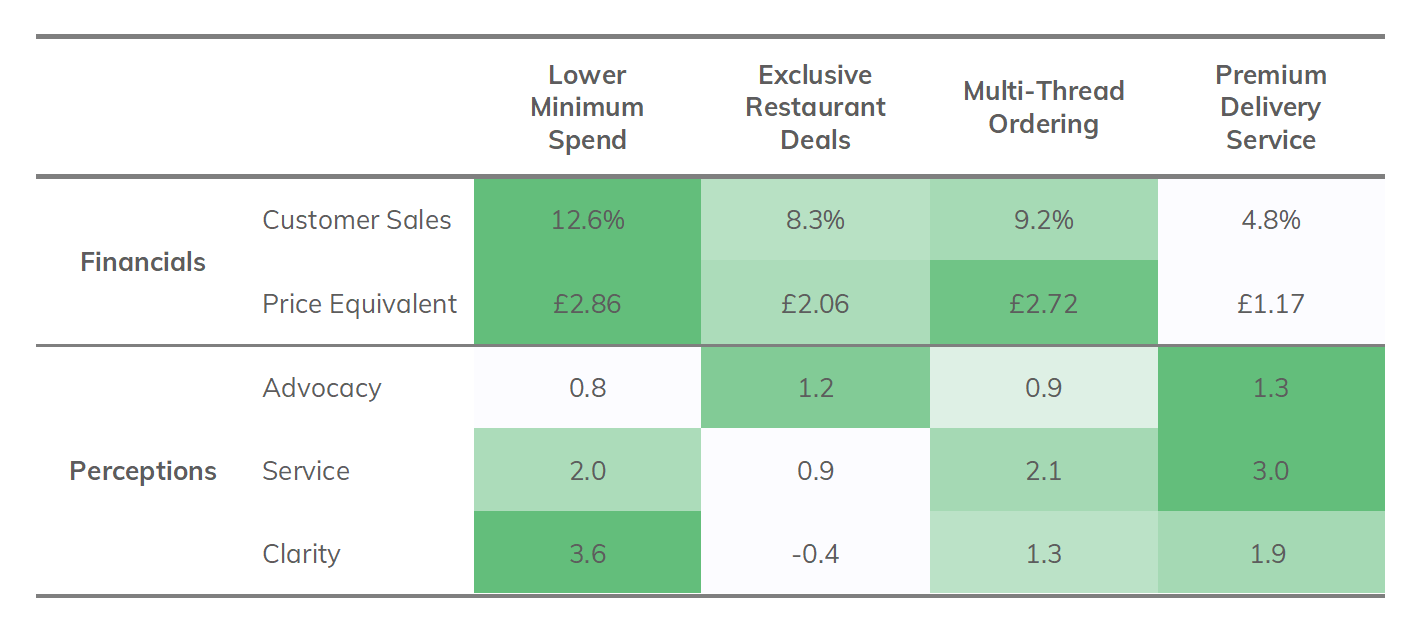Proposition Design: What Drives Customer Choice?
Posted: 02/02/2021


As markets evolve, businesses need to review their propositions to build on past success and ensure customers are willing to pay for what’s on offer. In this Buzz, we look at how Behaviourlab can be used to quantify the value of product features, and hence guide the design of new products by determining the most effective features and quantifying their impact with financial forecasts.
Food delivery, like Just Eat, Deliveroo and Uber Eats, is a fast growing, highly competitive and rapidly evolving sector. Innovation is key to survival and we were approached by one provider to evaluate their features strategy and optimal pricing. Given the existential risk of adopting the wrong strategy, the company felt strongly that traditional proposition testing lacked the accuracy required and, by definition, they couldn’t undertake A/B testing.
Our proposed solution was Behaviourlab – an immersive, online behavioural approach that replicates, as closely as possible, the real-world decision environment that people experience in practice. By reproducing our client’s purchase journey, we could run a randomised controlled trial on paid participants. Within this trial we varied proposition features, and the pricing, to observe their effects on customer acquisition and proposition perceptions. The experiment was run in seven markets across Europe and the Far East.
Figure 1: Feature Impacts

Figure 1 shows some example findings for the UK. The feature with the highest impact on customer acquisitions, or which can be used to support higher pricing, was lowering the minimum order value. Including that feature increased sign-ups by 12.6% or, equivalently, delivered the same volumes at a +£2.86 premium. Conversely, the least effective feature was a priority delivery service. But that did drive higher service perceptions and, thereby, advocacy. These findings were broadly similar in other geographies, but there were important local differences.
Based on this research our client finalised the proposition design, altered its pricing and launched in the first territory a few months later. Thereafter they began the international rollout, but with variations in the design to suit the local markets. Using the acquisition modelling they were also able to optimise their messaging and launch targeting. It was so successful that, within a few years, this proposition was available in hundreds of cities worldwide.